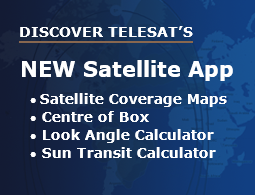It’s been exciting these past weeks at Telesat! As announced in August, we’ve partnered with MDA, a leading space technology company, to manufacture 198 advanced satellites for the Telesat Lightspeed Low Earth Orbit (LEO) program. The Telesat Lightspeed program is fully funded through global service delivery, thanks to a combination of Telesat’s equity contribution, vendor financing, and funding commitments from Canadian federal and provincial government partners.
Additionally, Telesat and SpaceX have jointly announced a multi-launch agreement for the Telesat Lightspeed constellation, the largest such contract in the history of SpaceX. Under this agreement, Telesat has contracted 14 launches using SpaceX’s Falcon 9 with each launch carrying up to 18 Telesat Lightspeed satellites to LEO. The launch campaign is scheduled to begin in 2026, enabling global service by the end of 2027.
Amidst all the positive industry coverage of this news, Telesat is often asked how it can compete with constellations that have thousands of satellites, whereas Telesat’s initial constellation will have fewer than 200. And with fewer satellites, how can Telesat deliver the performance required for enterprise-class connectivity?
Four main differences between Telesat Lightspeed and other LEO constellations answer those questions.
Higher and Less Congested Orbit
LEO orbits are getting increasingly crowded. Companies that have launched (and plan to launch) thousands of LEO satellites position their orbits between 400 – 600 km. above the earth. Telesat Lightspeed satellites will orbit the earth at 1,300 km, literally flying over the traffic jams.
In addition to less congestion, operators with thousands of satellites must make thousands of maneuvers in orbit to avoid colliding with space debris. According to an article in Space.com, satellites in lower LEO orbit have had to alter course over 50,000 times to avoid crashes since 2019.
Flying higher also puts more of the earth into view of each satellite and reduces the number of required ground terminal handoffs as the satellites pass overhead. Each Telesat Lightspeed satellite has approximately 5,500 km diameter view, and multiple satellites are always visible to a user terminal, increasing connectivity resiliency.
Agile Capacity Management via Technological Innovation
The Telesat Lightspeed design includes MDA’s industry-leading digital beamforming array antennas (DRAs) and integrated regenerative processor which provides nearly 300,000 beams across the network. The innovative DRAs provide better link performance, increased network efficiency, and an enhanced flexibility to focus and dynamically deliver capacity to users. This means the network can support multi-Gbps links to user terminals, as well as aggregating multiple-Gbps of capacity within a demand hot spot like an airport hub of remote community.
Telesat Lightspeed satellites also feature 4 optical inter-satellite links (OISLs) per satellite, creating a mesh network in space. This provides multiple, redundant data paths to route traffic across the globe, and eliminate terrestrial hops to get traffic to its final destination.
Enterprise-class LEO
Other LEO constellations have taken a business-to-consumer approach to the market. But the demands of the Enterprise, Mobility, and Government markets extend beyond best-effort services – they require service levels that are guaranteed by Committed Information Rates (CIRs) and Service Level Agreements (SLAs). Telesat’s approach is to construct an enterprise-class network, surpassing the resiliency and security of consumer-grade LEO networks.
The architecture of Telesat Lightspeed offers unparalleled performance and adaptability to enterprise customers. It has been meticulously designed to function as a flexible and scalable LEO backhaul network, effectively bridging connectivity gaps in areas where terrestrial fibre is either economically unfeasible or physically impractical. This “carrier of carriers” approach links remote communities, aircraft, and maritime vessels to the core telecom infrastructure, giving service providers precise control over how, when, and where they deliver services.
Moreover, the Telesat Lightspeed network facilitate the seamless integration of non-terrestrial networks (NTNs) into terrestrial ones. Telesat Lightspeed will be MEF 3.0 certified, streamlining the fusion of LEO networks with terrestrial counterparts. This breakthrough opens avenues for creating hybrid terrestrial/non-terrestrial 5G mobile infrastructures, significantly enhancing throughput and reliability for enterprises and consumers alike.
Complementary Business Model
Telesat’s go-to-market approach is to work through existing service providers and equipment manufacturers. We’ve been providing space services for over 50 years. Our customers know what their customers want, and one of those things is choice. Telesat will also work with regional Satellite Operators, enabling them with next-generation satellite capacity for their local markets.
For these reasons, Telesat Lightspeed offers a compelling value proposition for the markets we plan to serve. LEO has changed the game in space – a very large and fast-growing market. Telesat Lightspeed is a cutting-edge design and we’re confident that it will be extraordinarily well-received in the enterprise, telecom, mobility and government markets.




